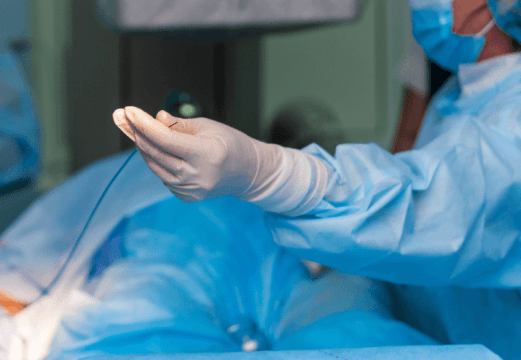The use of drug-covered balloons (DCBs) has increased significantly for the endovascular treatment of femoropopliteal arterial disease. Previous studies on first-generation high-dose DCB (HD-DCB) have validated its benefits, thus supporting its recommendation in current clinical guidelines. However, there have been reports of adverse effects associated with paclitaxel and its excipients.

Second-generation, lower-dose DCBs (LD-DCB) have been studied in the COMPARE (Compare I Pilot Study for the Treatment of Subjects With Symptomatic Femoropopliteal Artery Disease) Study, revealing similar primary patency at 2 years for LD-DCB and HD-DCB. However, due to the design of that study, there cannot be an adequate comparison between devices, as the population studied is less complex than real-world population.
The aim of this prospective, multicenter study was to contrast the results of LD-DCB and HD-DCB in patients with femoropopliteal disease in a real-world population.
The primary endpoint (PEP) focused on primary patency at 1 year (restenosis-free). The secondary endpoint (SEP) encompassed residual stenosis, slow flow or no reflow, rescue stent, post-procedural complications, freedom from clinically-driven target-lesion revascularization (CD-TLR) at 1 year, major amputation, limb-associated major adverse events (including a composite of CD-TLR and major amputation), and mortality.
Read also: Use of Intravascular Lithotripsy in Left Main.
The study included a total of 581 patients; 370 were treated with LD-DCB and 211 with HD-DCB. After propensity score matching to homogenize the samples, researchers compared 358 samples from the LD-DCB group and 163 from the HD-DCB group.
The LD-DCB group had a lower prevalence of men (62.4% vs. 71.1%; P = 0.043), older age (76 years vs. 74 years; P = 0.018), a higher rate of anticoagulant use (23.5% vs. 14.7%; P = 0.015), higher prevalence of critical ischemia (47.9% vs. 34.1%; P = 0.010), a lower ankle-brachial index (0.53 vs. 0.60; P = 0.016), greater involvement of the popliteal artery (55.7% vs. 26.0%; P < 0.001), smaller reference diameter (5.3 mm vs. 5.5 mm; P = 0.011), and more extensive lesions (20.6 cm vs. 17.5 cm; P = 0.001).
Regarding the PEP, the primary patency rate at 1 year was 87% in the LD-DCB group and 81.3% in the HD-DCB group, with no statistically significant differences (hazard ratio [HR]: 0.93; 95% confidence interval [CI]: 0.55-1.59; P = 0.79). There were also no statistically significant differences in the SEP.
Conclusion
In conclusion, LD-DCBs demonstrated comparable efficacy and safety with HD-DCBs in a real-world population, suggesting the feasibility of using LD-DCB in the treatment of femoropopliteal lesions.

Dr. Andrés Rodríguez.
Member of the Editorial Board of SOLACI.org.
Original Title: Low-Dose vs High-Dose Drug-Coated Balloon for Symptomatic Femoropopliteal Artery Disease PROSPECT MONSTER Study Outcomes.
Reference: Tatsuya Nakama, MD et al J Am Coll Cardiol Intv 2023.
Subscribe to our weekly newsletter
Get the latest scientific articles on interventional cardiology





